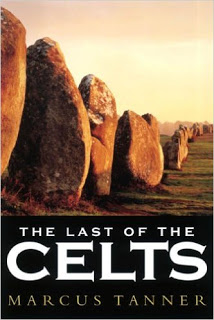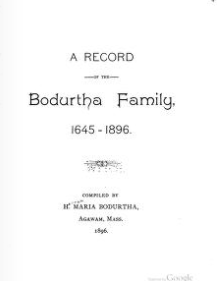
So “Cymru,” the name for Wales in the Welsh language, is pronounced kum-ree. (Whodathunk?)

I have finished reading the excellent albeit doorstop-esque The Last of the Celts by Marcus Tanner. If you have been following this blog, you know that I am at work on a book about Far West Texas, so you might be wondering, why the interest in the Celts? Of course, many Texans are descendants of Celts– Scottish, Welsh, and Irish, above all.
But it’s more than this.
Sometimes one’s thinking, stuck in a cultural rut, needs to unlimber. Reading into deep and/or lateral history gives one a freshly off-kilter look at what it means to be human, and it highlights forgotten or overlooked connections among now diverse peoples. Such as among, oh, say, Texians and Comanches.
(If you’re not familar with the term Texian, the Texas State Historical Association defines it thus: “[G]enerally used to apply to a citizen of the Anglo-American section of the province of Coahuila and Texas or of the Republic of Texas… As President of of the Republic, Mirabeau B. Lamar used the term to foster nationalism… In general usage after annexation [to the United States] Texan replaced Texian.” As you might guess, Texians and Comanches did not sit around the campfires together singing the 19th century equivalent of “Kumbaya.”)
I’ve been reading piles of books on Texas. So much of this literature tends to fall into broadly categorizing people– e.g., “Anglos” over here, “Spanish” or “Mexican” or “Tejano” or “Native American” or there. Or, for that matter, “white” or “black.” Such categorizations might be convenient, and I grant, at times necessary for some modicum of understanding, but in fact, many individuals’ ancestries and cultural identities are not so simple, nor is there anywhere near as much uniformity within such categories as many authors assume, or seem to imagine. (I was born in Texas but I did not grow up there. I still find peculiar the Texan notion of “Anglo” someone who might as easily be of English as of French, Czech, or, say, Irish extraction.)
Similarly, much of the literature on Mexico, whether in English or Spanish, discusses mestizaje as if the only mix were of Spanish and indigenous. But in fact, many Mexicans, like many Mexican Americans, for that matter, are part African, part Arab, Chinese, Russian, Swedish, Irish, you-name-it. (See also the preface to my anthology, Mexico: A Traveler’s Literary Companion.)

My own ancestry is a mix of Irish, Scottish, English, German, plus a sprinkling of Welsh– in other words, plenty of Celt in there. (For those of you new to this blog, in case you were wondering, why my interest in Texas, Mexico, and the US-Mexico border? I have been married to a Mexican and living in Mexico City for nearly 30 years, and I was born on the border, in El Paso, Texas.)
As far as I know, my own bit of Cymru goes back to a great-great-great-etc-etc-etc-great grandfather, one Reice Bodurtha, a founder of the Agawam Plantation (now Springfield), a Puritan colony in Massachusetts in the 1600s. (Not the Mayflower, but close! Not that I put too much stock in this sort of thing. Going back that many generations, say, twelve, to get to Reice Bodhurtha, we’re talking about a few thousand direct ancestors. The numbers of ancestors double with each generation back. Do the math– and keep your sombrero on: just about everyone alive today of European descent may be descended from Charlemagne!)
Reading The Last of the Celts inspired me consider connections in unlikely directions. One example: The story of indigenous peoples in Texas is a tragedy of extinction by disease, extermination in some instances, and finally, in the wake of the US Civil War, U.S. Army-directed conquest and removal to reservations in Arizona or Oklahoma. Strange but true to say, there are some– I say only some– parallels in the ancient and not-so-ancient world of the Celts, for over the centuries, they were pushed out by the dominant cultures to the edges of the European Continent and the British isles– and beyond, to Iceland (yes, Icelanders have a lot of Celt in them) and the Americas— and you betcha, that includes the Great State of Texas.
Then, under the sway of another dominant culture, there comes the loss of languages. As Tanner recounts, on the Celtic fringe, as increasing numbers of younger people preferred to communicate in English, indigenous languages began to degrade and then disappear as a living language. As for the medley of Celtic languages once spoken in Europe– Breton, Cornish, Irish, Manx, Scottish Gaelic, and Welsh– with the exception of the latter, all have disappeared or become for the most part relics, mainly used for a few phrases sung or recited for special occasions. Marcus Tanner’s The Last of the Celts recounts many a sad story.
And this is a story similar to that of the multitude of indigenous languages once spoken in Texas, including Comanche, or Numu Tekwapu, an Uto-Aztecan language. According to Omniglot.com, Numu Tekwapu is still spoken by several hundred mostly elderly Comanche.

Apropos of Comanche, or NɄMɄ TEKWAPɄ, a few links and videos:
> Comanchelanguage.org
> The Comanche Code Talkers of World War II by William C. Meadows
> The Comanche National Museum and Cultural Center in Lawton, Oklahoma
How to say “I love you” in Comanche:
Comanche National Museum Dance Demonstration:
Book review: The Comanche Empire by Pekka Hämäläinen
Apropos of Cymru:
The Widders with the Druids– interestingly, this is a traditional Welsh border area dance with much in common with the Matachines, which I have seen in Mexico. (No Welsh spoken– or I didn’t catch it…) Things get interesting at about one minute in:
If you’re not familiar with Matachines, have a look:
> Bodacious 360 view of some Widders— looking like they’re ready for some Comanches!
What does the Welsh language sound like?
Diana, Princess of Wales, offers a token phrase of Welsh in her first public speech at 1:30:
The title of the following video is “Cymry enwog a phroffesiynol yn sôn am sut mae’r Gymraeg yn allweddol i lwyddiant eu gyrfa neu fusnes. Famous and professional Welsh speakers talk about how the Welsh language has been key to their career or business success.”
It is an uncanny experience to listen to people speak a language that my ancestors must have spoken, and yet I do not understand a word of it.
P.S. Wee synchronicity du jour: The Big White Guy of Agawam has a cousin: Texas’ Second Amendment Cowboy.


Looking at Mexico in New Ways: An Interview with Historian John Tutino
The Strangely Beautiful Sierra Madera Astrobleme
Find out more about
C.M. Mayo’s books, articles, podcasts, and more.

